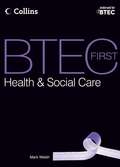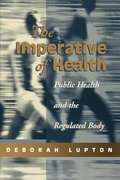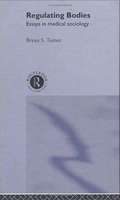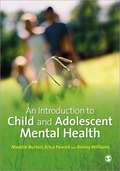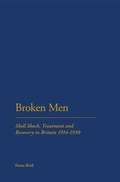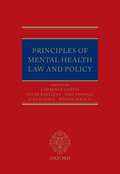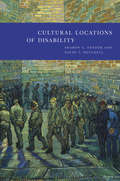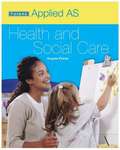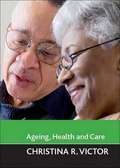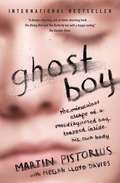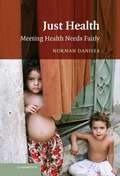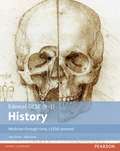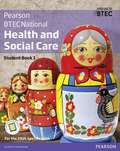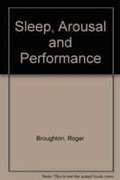- Table View
- List View
BTEC First Health & Social Care 2012 — BTEC FIRST HEALTH & SOCIAL CARE: Student Book [Second edition] (PDF)
by Mark WalshThis book focuses on and provides the knowledge and understanding needed to gain a BTEC qualification, but it never loses sight of the real world of heath and social care. By rooting the text in the real world the subject becomes more engaging and interesting to study. Following the BTEC First specification closely, this means that all the topics and issues referred to are fully covered. The features, Chapter introduction, Key terms, Activities, Case studies, Topic check and Chapter checklist regularly appear throughout the book, making each topic covered more accessible. Realistic case studies, topic-focused spreads and interactive activities, encompass all the knowledge and understanding needed for the achievement of a BTEC First. Chapters: Unit 1: Human Lifespan Development Unit 2: Health and Social Care Values Unit 3: Effective Communication in Health and Social Care Unit 4: Social Influences on Health and Wellbeing Unit 5: Promoting Health and Wellbeing Unit 6: The Impact of Nutrition on Health and Wellbeing Unit 7: Equality and Diversity in Health and Social Care Unit 8: Individual Rights in Health and Social Care Unit 9: Healthy Living Unit 10: Human Body Systems and Care of Disorders Unit 11: Services in Health and Social Care Unit 12: Creative and Therapeutic Activities in Health and Social Care
The Imperative Of Health: Public Health And The Regulated Body (PDF)
by Deborah LuptonIn this reappraisal of public health and health promotion in contemporary societies, Deborah Lupton explores public health and health promotion using contemporary sociocultural and political theory, particularly that building on Foucault's writings on subjectivity, embodiment and power relations. The author examines the implications of the new social theories for the study of health promotion and health communication to analyze the symbolic nature of public health practices, and explores their underlying meanings and assumptions.
The Imperative Of Health: Public Health And The Regulated Body
by Deborah LuptonIn this reappraisal of public health and health promotion in contemporary societies, Deborah Lupton explores public health and health promotion using contemporary sociocultural and political theory, particularly that building on Foucault's writings on subjectivity, embodiment and power relations. The author examines the implications of the new social theories for the study of health promotion and health communication to analyze the symbolic nature of public health practices, and explores their underlying meanings and assumptions.
Regulating Bodies: Essays In Medical Sociology
by Bryan S. TurnerRegulating Bodies provides a framework for the development of a new sub-field, namely the development of the body. Through an examination of various philosophical traditions (phenomenology, philosophical anthropology, structuralism and postmodernism) the author shows how the human body has been ignored or neglected by mainstream social theory. In integrating these different traditions, Turner demonstrates how the absent body has impoverished, not only the sociology of health and illness but the very foundations of sociology itself. In providing a general account of the problem of the body in modern society, this study, building on Turner's previous related works The Body and Society (1984) and Medical Power and Social Knowledge (1987), attempts to solve many of the existing epistemological and theoretical difficulties in social theories of the body. Turner has provided a major synthesis of his earlier work on the sociology of the body, established the idea of embodiment as fundamental to the sociology of health and illness, and pointed the way forward to new areas of cultural analysis.
An Introduction To Child And Adolescent Mental Health (PDF)
by Briony Williams Erica Pavord Maddie BurtonAnyone who works within children and adolescent mental health services will tell you what a challenging and complex world it is. To help prepare you, the authors have produced a clear introduction to child and adolescent mental health that takes you step-by-step on a journey through the subject. Beginning with the foundations, the book explores the common mental health concepts and influences that you can expect to encounter examining topics like the difference between emotional and mental health issues and how mental health problems develop. It then moves on to explore the vital skills that you will need to develop like effective communication and basic counselling skills, and introduces some of the common interventions like Cognitive Behavioural Therapy, Psychodynamic theory and Family work. Written by a multi-disciplinary team of passionate and experienced experts, the book strikes an effective balance between introducing the relevant theory and showing how this can be applied in the real world. It is an essential starting point to the subject of child and adolescent mental health and suitable for any students planning to support this group.
Broken Men: Shell Shock, Treatment And Recovery In Britain, 1914-1930 (PDF)
by Fiona ReidShell shock achieved a very high political profile in the years 1919-1922. Publications ranging from John Bull to the Morning Post insisted that shell-shocked men should be treated with respect, and the Minister for Health announced that the government was committed to protecting shell-shocked men from the stigma of lunacy. Yet at the same time, many mentally-wounded veterans were struggling with a pension system which was failing to give them security. It is this conflict between the political rhetoric and the lived experience of many wounded veterans that explains why the government was unable to dispel the negative wartime assessment of official shell-shock treatment. There was also a real conflict between the government's wish to forget shell shock whilst memorialising the war and remembering the war dead. As a result of these contradictions, shell shock was not forgotten, on the contrary, the shell-shocked soldier quickly grew to symbolise the confusions and inconsistencies of the Great War. HB: 9781847252418 PB: 9781441148858
Principles Of Mental Health Law And Policy
by Lawrence Gostin Jean Mchale Philip Fennell Ronald D. Mackay Peter BartlettPrinciples of Mental Health Law provides a comprehensive account of the law concerning mental health in England and Wales. From the historical backdrop to the current law in the area it provides detailed examination of the Mental Health Act 1983 and the changes introduced by the new Mental Health Act 2007. The regulation of care and treatment in hospital and the community is explored. The book also goes beyond the legislation to explore the legal andregulatory challenges in the area of mental health in a range of areas from confidentiality and privacy to causation and limitation. The chapters are written by leading national and international authorities in the area of mental health.
Internal structure of the Brain (large Print)
by Rnib BookshareThis image shows a mid-saggital cross-section of the brain (i.e. through longitudinal fissure, in the centre of the brain). There is a locator dot shown, which will be at the top left of the page when the image is the right way up. There is an image border surrounding the image and labels. The main part of the brain is labelled cerebrum with the front of the brain on the left. Down from this in the centre is the pons, medulla and the spinal cord which extends to the bottom of the page. To the right of the pons and the medulla is the cerebellum. In the centre of the diagram is the corpus callosum which is a curved horizontal shape, and the three oval structures below this depict the thalamus, hypothalamus and pineal gland. The pituitary gland is below and to the left of the hypothalamus. Note: the thalamus is not in centre of the brain, there is one in each hemisphere just on either side of the longitudinal fissure.
Internal structure of the Brain (UEB contracted)
by Rnib BookshareThis image shows a mid-saggital cross-section of the brain (i.e. through longitudinal fissure, in the centre of the brain). There is a locator dot shown, which will be at the top left of the page when the image is the right way up. There is an image border surrounding the image and labels. The main part of the brain is labelled cerebrum with the front of the brain on the left. Down from this in the centre is the pons, medulla and the spinal cord which extends to the bottom of the page. To the right of the pons and the medulla is the cerebellum. In the centre of the diagram is the corpus callosum which is a curved horizontal shape, and the three oval structures below this depict the thalamus, hypothalamus and pineal gland. The pituitary gland is below and to the left of the hypothalamus. Note: the thalamus is not in centre of the brain, there is one in each hemisphere just on either side of the longitudinal fissure.
Internal structure of the Brain (UEB uncontracted)
by Rnib BookshareThis image shows a mid-saggital cross-section of the brain (i.e. through longitudinal fissure, in the centre of the brain). There is a locator dot shown, which will be at the top left of the page when the image is the right way up. There is an image border surrounding the image and labels. The main part of the brain is labelled cerebrum with the front of the brain on the left. Down from this in the centre is the pons, medulla and the spinal cord which extends to the bottom of the page. To the right of the pons and the medulla is the cerebellum. In the centre of the diagram is the corpus callosum which is a curved horizontal shape, and the three oval structures below this depict the thalamus, hypothalamus and pineal gland. The pituitary gland is below and to the left of the hypothalamus. Note: the thalamus is not in centre of the brain, there is one in each hemisphere just on either side of the longitudinal fissure.
Cultural Locations Of Disability
by Sharon L. Snyder David T. MitchellIn Cultural Locations of Disability, Sharon L. Snyder and David T. Mitchell trace how disabled people came to be viewed as biologically deviant. The eugenics era pioneered techniques that managed "defectives" through the application of therapies, invasive case histories, and acute surveillance techniques, turning disabled persons into subjects for a readily available research pool. In its pursuit of normalization, eugenics implemented disability regulations that included charity systems, marriage laws, sterilization, institutionalization, and even extermination. Enacted in enclosed disability locations, these practices ultimately resulted in expectations of segregation from the mainstream, leaving today's disability politics to focus on reintegration, visibility, inclusion, and the right of meaningful public participation. Snyder and Mitchell reveal cracks in the social production of human variation as aberrancy. From our modern obsessions with tidiness and cleanliness to our desire to attain perfect bodies, notions of disabilities as examples of human insufficiency proliferate. These disability practices infuse more general modes of social obedience at work today. Consequently, this important study explains how disabled people are instrumental to charting the passage from a disciplinary society to one based upon regulation of the self.
Visual pathway (large print)
by Rnib BookshareThis image shows the pathway of the optic nerves from the eyes to the brain. There is a locator dot shown, which will be at the top left of the page when the image is the right way up. It is shown as a top-down (plan) view of a horizontal cross section through the eyes and brain (eyes on the left hand side, and back of head on the right hand side). It reads from left to right. The diagram is split into 5 vertical sections labelled above, and each section is separated by vertical dotted lines. The first section on the left is labelled Eyes, and below this are two circles representing eyes, with the left eye below the right eye. The sections after this are all within the brain. The second section Optic nerve shows a solid line extending from the left of each eye and a dashed line extending from the right of each eye. These are the optic nerves and labels next to the lines explain which side of the eye each optic nerve extends from. The next section Optic chiasm shows two of the optic nerves crossing. The left optic nerve from the right eye crosses the right optic nerve from the left eye. The next section Lateral geniculate bodies shows two circles. The lower one is on the left side of the brain, and the upper one is on the right side of the brain. The two solid lines from each eye meet at the lower circle and the two dashed lines meet at the upper circle. The final section Visual cortex shows the back of the brain, with the two hemispheres left and right. The dashed line from the right Lateral geniculate body goes to the right hemisphere and the solid line from the left Lateral geniculate body goes to the left hemisphere. This means that the right side of each eye is represented in the right hand side of the brain and the left side of each eye is represented in the left side of the brain.
Visual pathway (UEB uncontracted)
by Rnib BookshareThis image shows the pathway of the optic nerves from the eyes to the brain. There is a locator dot shown, which will be at the top left of the page when the image is the right way up. It is shown as a top-down (plan) view of a horizontal cross section through the eyes and brain (eyes on the left hand side, and back of head on the right hand side). It reads from left to right. The diagram is split into 5 vertical sections labelled above, and each section is separated by vertical dotted lines. The first section on the left is labelled Eyes, and below this are two circles representing eyes, with the left eye below the right eye. The sections after this are all within the brain. The second section Optic nerve shows a solid line extending from the left of each eye and a dashed line extending from the right of each eye. These are the optic nerves and labels next to the lines explain which side of the eye each optic nerve extends from. The next section Optic chiasm shows two of the optic nerves crossing. The left optic nerve from the right eye crosses the right optic nerve from the left eye. The next section Lateral geniculate bodies shows two circles. The lower one is on the left side of the brain, and the upper one is on the right side of the brain. The two solid lines from each eye meet at the lower circle and the two dashed lines meet at the upper circle. The final section Visual cortex shows the back of the brain, with the two hemispheres left and right. The dashed line from the right Lateral geniculate body goes to the right hemisphere and the solid line from the left Lateral geniculate body goes to the left hemisphere. This means that the right side of each eye is represented in the right hand side of the brain and the left side of each eye is represented in the left side of the brain.
Visual pathway (UEB contracted)
by Rnib BookshareThis image shows the pathway of the optic nerves from the eyes to the brain. There is a locator dot shown, which will be at the top left of the page when the image is the right way up. It is shown as a top-down (plan) view of a horizontal cross section through the eyes and brain (eyes on the left hand side, and back of head on the right hand side). It reads from left to right. The diagram is split into 5 vertical sections labelled above, and each section is separated by vertical dotted lines. The first section on the left is labelled Eyes, and below this are two circles representing eyes, with the left eye below the right eye. The sections after this are all within the brain. The second section Optic nerve shows a solid line extending from the left of each eye and a dashed line extending from the right of each eye. These are the optic nerves and labels next to the lines explain which side of the eye each optic nerve extends from. The next section Optic chiasm shows two of the optic nerves crossing. The left optic nerve from the right eye crosses the right optic nerve from the left eye. The next section Lateral geniculate bodies shows two circles. The lower one is on the left side of the brain, and the upper one is on the right side of the brain. The two solid lines from each eye meet at the lower circle and the two dashed lines meet at the upper circle. The final section Visual cortex shows the back of the brain, with the two hemispheres left and right. The dashed line from the right Lateral geniculate body goes to the right hemisphere and the solid line from the left Lateral geniculate body goes to the left hemisphere. This means that the right side of each eye is represented in the right hand side of the brain and the left side of each eye is represented in the left side of the brain.
Applied As Health And Social Care For OCR (PDF)
by Angela FisherWritten by the chief examiner and senior examiners who are responsible for writing the OCR AS specification, this work aims to provide a match to the Applied AS qualification. It covers promoting quality care; communicating in care settings; promoting good health; health and safety in care settings'; and more.
Effects of smoking- Pie Chart 1
by Sheffield Vi ServiceThis is a pie chart showing the effects of smoking on men aged 35 to 64.
Bones of the human right foot (UEB contracted)
by Adrian FarnsworthThis image shows the bones of the human foot shown from above. There is a locator dot shown, which will be at the top left of the page when the image is the correct way up. The toes are at the top of the page and the heel bone is at the bottom centre of the page. The big toe is at the top left and is made of two bones. The other four toes to the right are each made of three bones. Down from the toes are five long bones and then a number of square and rounded bones that form the body of the foot. The two bones just up from the heel are where the lower end of the long bones of the lower leg attach. They would come straight up towards you.
Human Skeleton (Tactile)
by Adrian FarnswrothThis is an image of a human skeleton seen from the front. The head is at the top of the page and the skeleton's arms are held out from its sides. It's legs are at the bottom of the page.
Structure of Skeletal Muscle (SEB uncontracted)
by RnibThe image shows the side view and cross section of: a muscle, containing bundles of fibres; b. bundle of fibres; c. a single fibre, containing myofibrils; and d. a myofibril, containing filaments. A locator dot and title are shown. These must always be at the top left of the page when the image is the right way up.
Ageing, Health And Care (PDF)
by Christina R. VictorThe ageing of the population has enormous implications for the provision of, and access to, health care. Christina Victor's important new textbook provides comprehensive overview of the experiences of older people, chapters on physical health, mental health, disability and lifestyle, a thesis of current policy developments, the key debates on the future health of elders and an international, up-to-date perspective. Written by a leader in the field, the book covers key questions such as the fitness of future older people, the widening inequalities in their health and whether health in old age is related to habits and behaviour in earlier life.
Ghost Boy: The Miraculous Escape Of A Misdiagnosed Boy Trapped Inside His Own Body
by Martin Pistorius Megan Lloyd DaviesIn January 1988, aged twelve, Martin Pistorius fell inexplicably sick. First he lost his voice and stopped eating; then he slept constantly and shunned human contact. Doctors were mystified. Within eighteen months he was mute and wheelchair-bound. Martin's parents were told that an unknown degenerative disease had left him with the mind of a baby and he probably had less than two years to live. Martin went on to be cared for at centres for severely disabled children, a shell of the bright, vivacious boy he had once been. What no-one knew is that while Martin's body remained unresponsive his mind slowly woke up, yet he could tell no-one; he was a prisoner inside a broken body. Then, in 1998, when Martin was twenty-three years old, an aromatherapy masseuse began treating him and sensed some part of him was alert. Experts were dismissive, but his parents persevered and soon realised their son was as intelligent as he'd always been. With no memory of the time before his illness, Martin was a man-child reborn in a world he didn't know. He was still in a wheelchair and unable to speak, but he was brilliantly adept at computer technology. Since then, and against all odds, he has fallen in love, married and set up a design business which he runs from his home in Essex. Ghost Boyis an incredible, deeply moving story of recovery and the power of love. Through Martin's story we can know what it is like to be here and yet not here - unable to communicate yet feeling and understanding everything. Martin's emergence from his darkness enables us to celebrate the human spirit and is a wake-up call to cherish our own lives.
Just Health: Meeting Health Needs Fairly (PDF)
by Norman DanielsIn this book by the award-winning author of Just Healthcare, Norman Daniels develops a comprehensive theory of justice for health that answers three key questions: what is the special moral importance of health? When are health inequalities unjust? How can we meet health needs fairly when we cannot meet them all? Daniels' theory has implications for national and global health policy: can we meet health needs fairly in ageing societies? Or protect health in the workplace while respecting individual liberty? Or meet professional obligations and obligations of justice without conflict? When is an effort to reduce health disparities, or to set priorities in realising a human right to health, fair? What do richer, healthier societies owe poorer, sicker societies? Just Health: Meeting Health Needs Fairly explores the many ways that social justice is good for the health of populations in developed and developing countries.
Edexcel Gcse (9-1) History Medicine Through Time, C1250-present (PDF)
by Hilary Stark Sally ThorneExam Board: Edexcel Level: GCSE Subject: History First teaching: September 2016 First exams: Summer 2018 Series Editor: Angela Leonard This Student Book: covers the essential content in the new specification in an engaging way, using detailed narrative, sources, timelines, key words, helpful activities and extension material uses the 'Thinking Historically' approach and activities to help develop conceptual understanding of areas such as evidence, interpretations, causation and change, through targeted activities has 'Writing Historically' features that focus on the writing skills most important to historical success. This literacy support uses the proven Grammar for Writing approach used in many English departments includes lots of exam guidance, with practice questions, sources, sample answers and tips to support preparation for GCSE assessments. * These resources have not yet been endorsed. This information is correct as of 31st July 2015, but may be subject to change. You do not have to purchase any resources to deliver our qualification.
BTEC National: Health And Social Care, Student Book 1 (PDF)
by Marilyn Billingham Pamela Davenport Hilary Talman Nicola Cramphorn Beryl Stretch Liz Howarth Nicola MatthewsEach Student Book and ActiveBook has clearly laid out pages with a range of supportive features to aid learning and teaching: Getting to know your unit sections ensure learners understand the grading criteria and unit requirement. Pause Point features support formative assessment and enable learners to gauge attainment of knowledge at regular intervals. Case Study and Theory into practice features enable development of problem-solving skills and place the theory into real life situations learners could encounter. Assessment practice features provide scaffolded assessment practice activities that help prepare learners for assessment. Within each assessment practice activity, a Plan, Do and Review section supports learners' formative assessment by making sure they fully understand what they are being asked to do, what their goals are and how to evaluate the task and consider how the could improve. Literacy and numeracy activities provide opportunities for reinforcement in these key areas, placing the skills into a Health and Social Care context. Dedicated Think future pages provide case studies from the industry, with a focus on aspects of skills development that can be put in practice in a real work environment and further study.
Sleep, Arousal, and Performance: a Tribute to Bob Wilkinson (PDF)
by Robert T Wilkinson Roger J Broughton Robert D OgilvieA scientific exploration of the quaint old notion that people's productivity and health are related to whether or not they got a good night's sleep. The 19 papers, from a May 1990 conference in Cambridge (marking the retirement of a pioneer researcher in the field) consider theoretical issues; physiology and information processing; performance, sleep deprivation, and mapping; clinical applications; and a synthesis. Most of the contributors are from psychology. (c) by Book News, Inc. , Portland, OR.
